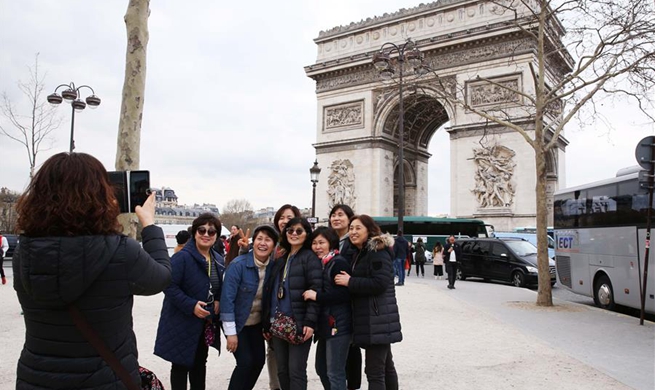HANGZHOU, June 26 (Xinhua) -- The winter of 2010 was the warmest one in the memory of Zhao Ying.
Having been turned down at countless job interviews, Zhao, who is hearing-impaired, felt extremely shy when he knocked on the door of Kong Lingjun, chairman of KONCISE, a luxury watch brand known for their exquisitely detailed hand painted enamel dials.
KONCISE was recruiting technicians to do cloisonne, an ancient decorative technique that requires patience, experience as well as good artistic taste and skills, but Zhao knew nothing about watch-making.
Kong, however, was confident that Zhao, and many others like him, can qualify the job. "I want to give these young people the opportunities to prove themselves," said Kong, who now hires about 50 employees with hearing disabilities.
"They are quite well-educated and have artistic talent, but has been hard to find a suitable job after graduation because of their physical conditions," said Kong. "They often ended up doing some washing at the restaurants or the laundries and were away from society and the life circle of ordinary people."
Li Hang, in his 30s, was working as a waiter before joining KONCISE. "I didn't know if I can do cloisonne as it is very complicated," said Li. "I learned everything from the beginning."
Cloisonne is an ancient technique for decorating metalwork objects. During the process, metal filaments are fused to the surface of an object to outline a design filled in with enamel paste. The object then is baked in a kiln for numerous times for a perfect glaze color.
"The watch masters in Europe often work in distant valleys that are extremely quiet, because they need to eliminate all kinds of interferences to stay focused," said Kong. "These people, though suffering from hearing losses, are pure and dedicated."
The miniature cloisonne Kong's company adopts is dubbed "art under the microscope." Enamel masters decorate the dial using a gold wire with a diameter of just 0.04 millimeter and all the processes are completed under the microscope before the finished patterns are sent to the kiln and glazed layer by layer.
"A slight difference in temperature will result in distinct colors and bubbles may appear if the temperature of the kiln is not properly controlled," said Kong. "Even all are perfect, the yield is only about 30 percent."
This may sound frustrating but Li and his peers were determined to conquer these difficulties and kept perfecting their skills.
Appreciating and respecting their work, Kong looks after these hearing-impaired employees with great care. The staff are not allowed to speak loudly or give dirty looks in front of them. "These young people are very sensitive. Even a frown may make them think 'did I do anything wrong?'" said Kong.
Since the first worker with hearing loss joined the company in 2011, Kong has hired almost 50 hearing-impaired enamel masters. The watches made by their hands are lauded by collectors for their high artistic level.
Two of the company's watches which named "horse" and "dragon" were collected by the International Museum of Horology, a clock museum owned and operated by the city of La Chaux-de-Fonds in Switzerland. The company also is one of the first Chinese brands to attend Baselworld, a century-old show gathering the world's top brands in watches, jewelry, gems and related industries.
Kong said he aims to offer jobs to at least 1,000 people with disabilities. "We hope more people with disabilities can find a platform to increase their sense of self-worth," said Kong.

















